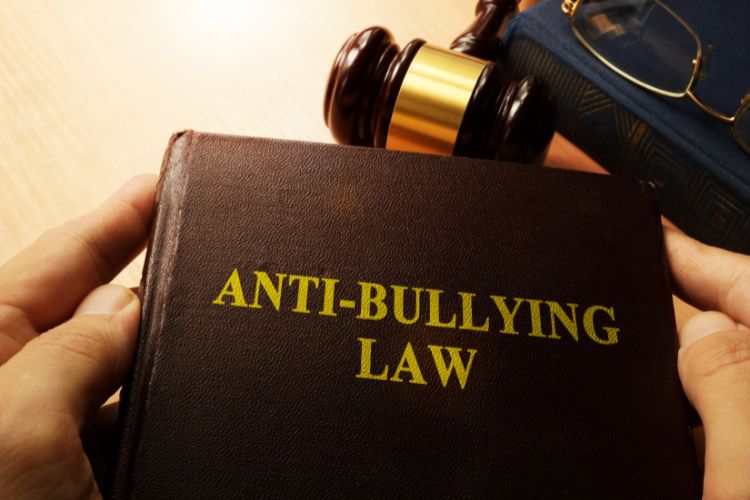In today’s digital age, our lives have become intertwined with technology, offering us unparalleled connectivity and convenience. However, along with these advancements, we face new challenges in the form of cyberbullying, stalking, and harassment. These pervasive issues have significant implications for personal safety and mental well-being. It is imperative that we address them head-on and equip ourselves with the knowledge and tools to combat them effectively.
Addressing these issues is crucial for personal safety and mental well-being. The consequences of cyberbullying, stalking, and harassment can be severe, leading to anxiety, depression, self-esteem issues, and even suicidal thoughts. By understanding the prevalence and impact of these acts, we can actively work towards creating safer digital spaces and fostering healthier online relationships.
Firstly, let us establish a clear understanding of these terms.
What Is Cyberbullying?
Cyberbullying refers to the deliberate use of technology, such as social media platforms, instant messaging, or online forums, to intimidate, harass, or threaten individuals. It encompasses various actions, including spreading rumors, posting hurtful comments, sharing explicit content without consent, or engaging in online exclusion or humiliation. Cyberbullying can cause significant emotional distress, damaged self-esteem, and lead to social isolation.
What Is Cyberstalking?
Cyberstalking involves the persistent surveillance, monitoring, or unwanted attention directed at an individual through electronic devices or online platforms. It often manifests as relentless tracking of the victim’s online activities, invasion of privacy, threats, or sending unsolicited messages or explicit content. Cyberstalking instills fear, distress, and a sense of vulnerability in the victim, as their personal boundaries are violated in the digital realm.
What Is Cyber Harassment?
Cyber harassment encompasses a wide range of unwelcome and repetitive behaviors designed to annoy, threaten, or intimidate individuals. This can include sending excessive messages, engaging in online impersonation, creating fake profiles or accounts, disseminating personal information without consent, or engaging in online hate campaigns. Cyberharassment aims to cause emotional harm, disrupt daily life, and instigate fear in the victim.
Cyber Harassment, Bullying & Stalking Statistics in the United States

Cyberbullying Statistics
- According to the National Center for Education Statistics, in 2019, approximately 20% of students aged 12-18 reported being bullied online.
- A survey conducted by the Cyberbullying Research Center found that around 37% of young people between the ages of 12 and 17 have experienced cyberbullying in their lifetime.
- The same study revealed that approximately 25% of teenagers reported being repeatedly cyberbullied.
- A study published in the Journal of Adolescent Health found that LGBTQ+ youth are more likely to experience cyberbullying than their heterosexual counterparts.
- Research by the Cyberbullying Research Center indicates that girls are more likely to be involved in cyberbullying as both victims and perpetrators.
Cyberstalking Statistics
- The Bureau of Justice Statistics reports that about 1 in 4 stalking victims experienced some form of cyberstalking, which includes harassment or threats via email, social media, or other online platforms.
- A study published in the Journal of Interpersonal Violence found that 60% of stalking victims reported experiencing online harassment.
- The majority of cyberstalking victims are women, accounting for approximately 70% of reported cases.
- The Pew Research Center found that younger adults, particularly those between the ages of 18 and 29, are more likely to experience online stalking compared to older age groups.
Cyber Harassment Statistics
- The Pew Research Center reports that 41% of adults in the United States have personally experienced online harassment, including offensive name-calling, deliberate embarrassment, or physical threats.
- Women are disproportionately targeted by online harassment, with a Pew Research Center survey revealing that they experience more severe forms of harassment, such as stalking or sexual harassment.
- The Anti-Defamation League’s 2020 Online Hate and Harassment Report found that social media platforms have become common venues for harassment, with 44% of respondents stating they experienced hate and harassment on platforms like Facebook, Twitter, and Instagram.
The Crucial Role of Addressing Cyber Bullying, Harassment, and Stalking
The consequences of these behaviors can be devastating. Victims may experience long-lasting emotional trauma, depression, and social withdrawal. The constant fear and distress they endure can negatively affect their mental health and overall quality of life. To safeguard personal safety and well-being, it is imperative that we address these issues effectively.
By actively combating cyberbullying, harassment, and stalking, we can create a safer digital environment where individuals feel protected, respected, and free from harm. This requires implementing robust measures such as stringent regulations, educational programs, and increased awareness to promote empathy, digital literacy, and responsible online behavior. Providing support systems for victims is also crucial to aid their recovery and help them regain a sense of security.
Ultimately, addressing cyberbullying, harassment, and stalking is essential to protecting the mental well-being of individuals and fostering a healthier digital landscape. By working together to combat these issues, we can create a more inclusive, empathetic, and safer online space for everyone.
Understanding Cyberbullying
Cyberbullying has emerged as a significant concern in the digital age, with its far-reaching consequences impacting individuals’ personal safety and mental well-being. By delving into the definition, forms, platforms, and consequences of cyberbullying, we can gain a comprehensive understanding of this pervasive issue.
Cyberbullying takes various forms, including online harassment, trolling, and cyberstalking.
- Online harassment involves sending malicious messages, sharing explicit content, or spreading rumors to humiliate or demean the victim.
- Trolling refers to posting inflammatory or offensive comments with the intention of provoking emotional reactions.
- Cyberstalking entails the persistent surveillance, monitoring, or harassment of individuals online.
Common Platforms And Mediums Used For Cyberbullying
Cyberbullying can occur across a range of platforms and mediums. Social media platforms like Facebook, Twitter, Instagram, and Snapchat are frequently used for cyberbullying, as they provide a wide reach and anonymous communication options.
Instant messaging apps, online forums, and gaming platforms also serve as conduits for cyberbullying. The internet’s anonymity and ease of access contribute to the proliferation of such behavior.

The Psychological And Emotional Impact Of Cyberbullying On Victims
The psychological and emotional toll inflicted on victims of cyberbullying is profound. Constant exposure to online abuse, threats, and humiliation can lead to anxiety, depression, low self-esteem, and even suicidal ideation.
The 24/7 nature of online communication means victims may feel trapped and unable to escape the torment, affecting their overall well-being and ability to function in daily life. The anonymity of cyberbullying perpetrators exacerbates the feelings of powerlessness and distress experienced by victims.
Addressing cyberbullying requires a multifaceted approach involving individuals, communities, and institutions. Education plays a pivotal role in raising awareness about the consequences of cyberbullying, promoting empathy, and teaching responsible online behavior. Parents, teachers, and caregivers should be equipped with the knowledge and resources to recognize the signs of cyberbullying and provide support to victims.
Cyberbullying is a pervasive issue with severe consequences for personal safety and mental well-being. Understanding its definition, various forms, platforms used, and legal implications helps us comprehend the magnitude of this problem. By raising awareness, implementing proactive measures, and fostering a culture of empathy and respect both online and offline, we can create a safer digital landscape that promotes personal well-being and protects individuals from the detrimental effects of cyberbullying.
Legal Implications and Consequences of Cyberbullying
Cyberbullying has legal implications, and laws and regulations have been implemented to address this issue. Depending on the jurisdiction, cyberbullying may be considered a criminal offense, leading to legal consequences for perpetrators. In some cases, civil lawsuits can be filed against cyberbullies for defamation, intentional infliction of emotional distress, or invasion of privacy.
Educational institutions and workplaces also impose disciplinary actions for cyberbullying incidents, aiming to deter such behavior and protect the well-being of their communities.
Online platforms have a responsibility to enforce robust community guidelines and provide mechanisms for reporting and addressing cyberbullying incidents promptly. Implementing effective moderation systems and providing mental health resources can contribute to creating safer digital spaces.
Collaboration between law enforcement agencies, legal authorities, and social media platforms is essential in identifying cyberbullies and holding them accountable for their actions.
Encouraging victims to report incidents of cyberbullying and providing them with access to support networks, helplines, and counseling services are vital steps in mitigating the impact of cyberbullying.

US Laws on Cyber Bullying, Stalking & Harassment
- The Stop Online Piracy Act (SOPA) and the Protect IP Act (PIPA): These legislative acts were proposed to combat online piracy but also contain provisions that aim to address cyberbullying, cyberstalking, and cyber harassment. They seek to strengthen intellectual property laws and provide legal mechanisms to take down websites involved in illegal activities, including those associated with online harassment and infringement.
- The Communications Decency Act (CDA) of 1996: The CDA includes provisions that criminalize the use of the Internet to harass or threaten individuals. It aims to regulate offensive and harmful online content and holds individuals accountable for their actions by imposing penalties for online harassment.
- The Cyberstalking Law: This law specifically criminalizes the use of electronic communications to stalk or harass someone. It encompasses behaviors such as repeated unwanted contact, monitoring someone’s online activities, making threats, or engaging in online harassment through social media platforms, email, or other electronic means.
- The Children’s Internet Protection Act (CIPA): CIPA requires schools and libraries that receive federal funding to implement measures to protect children from accessing harmful online content, including cyberbullying. It encourages the use of internet filtering technologies and provides guidelines for educating students about safe online behavior.
- The Cyberbullying Prevention Act: This act aims to address cyberbullying by providing schools with funding to educate students about the consequences of such behavior and implement prevention programs. It encourages proactive measures to create safe and respectful online environments, raising awareness about the impact of cyberbullying on victims.
- State Laws: State laws on cyberbullying, cyberstalking, and cyber harassment may vary. Many states have specific legislation that targets these issues, imposing penalties for offenders and providing legal remedies for victims. It is important to be familiar with the laws in your specific jurisdiction to understand your rights and protections.
- Online Platform Policies: Online platforms and social media companies often have their own policies and mechanisms in place to address cyberbullying, cyberstalking, and cyber harassment. They provide users with options to report abusive content, block or mute offenders, and seek assistance in dealing with harassment. These policies aim to create safer online environments and deter abusive behavior.
Recognizing Signs Of Stalking Behavior And Persistent Harassment
It is crucial to be aware of the signs indicating stalking behavior and persistent harassment. These signs may include unwanted messages or comments, excessive monitoring of an individual’s online activity, following their digital footprint, making false accusations, or repeatedly contacting them despite their expressed desire for no contact. Recognizing these signs can help victims seek appropriate support and intervention.
Types of Stalking
Online stalking can take different forms, including intimate partner stalking, celebrity stalking, and revenge stalking.
- Intimate partner stalking occurs when a current or former partner engages in stalking behaviors to exert control, monitor, or intimidate the victim.
- Celebrity stalking involves obsessive behavior by individuals fixated on public figures, often leading to threats or intrusive contact.
- Revenge stalking occurs when someone seeks retribution or retaliation against a person through persistent harassment, motivated by anger or resentment.
Psychological Effects On Victims And The Importance Of Early Intervention
Online stalking and harassment can have severe psychological effects on victims. They may experience heightened anxiety, fear, depression, and a constant sense of being watched or targeted.
These behaviors can significantly impact their mental well-being, daily functioning, and overall quality of life. Early intervention is crucial to mitigate the psychological harm caused by stalking and harassment, providing victims with the necessary support, protection, and resources to address their experiences.
Addressing stalking and harassment requires a multidimensional approach. Educating individuals about these behaviors, promoting healthy online boundaries, and encouraging open communication can help prevent and mitigate incidents. Developing comprehensive legal frameworks that recognize the severity of online stalking and harassment is also essential, ensuring that victims have legal recourse and protection. Furthermore, providing support services, counseling, and mental health resources to victims is vital in assisting their recovery and well-being.

Safety Measures and Prevention Strategies
Ensuring personal safety and preventing incidents of cyberbullying, cyberharassment, and stalking require proactive measures and effective prevention strategies. By implementing the following safety measures and promoting responsible online behavior, individuals can protect themselves and reduce the risk of becoming victims.
Securing Personal Information And Maintaining Online Privacy
Protecting personal information is essential to prevent cyberbullying, cyber harassment, and stalking. Avoid sharing sensitive details like full names, addresses, phone numbers, or passwords online. Regularly review and update privacy settings on social media platforms to limit access to personal information.
Establishing Strong Passwords And Utilizing Two-Factor Authentication
Creating strong, unique passwords for all online accounts is crucial. Use a combination of uppercase and lowercase letters, numbers, and symbols. Enable two-factor authentication whenever possible, adding an extra layer of security to prevent unauthorized access.
Understanding Privacy Settings On Social Media Platforms
Familiarize yourself with the privacy settings of social media platforms. Set controls to limit the visibility of personal information and posts to trusted individuals only. Regularly review and adjust privacy settings as needed to ensure maximum protection.
Recognizing And Avoiding Risky Online Behaviors
Educate yourself about risky online behaviors that can lead to cyberbullying, stalking, or harassment. Avoid engaging in or sharing provocative, offensive, or harmful content. Be cautious when interacting with strangers online and avoid sharing personal information with unknown individuals.
Teaching Digital Citizenship And Responsible Online Behavior
Promote digital citizenship and responsible online behavior among individuals, especially children, and adolescents. Teach them about the importance of treating others with respect, empathy, and kindness in digital spaces. Encourage open communication and reporting of any instances of cyberbullying, harassment, or stalking.
Building Strong Support Networks
Encourage individuals to build strong support networks consisting of trusted friends, family members, and mentors. Having someone to confide in and seek guidance from can provide emotional support and assistance in dealing with, cyber harassment, bullying, or stalking incidents.
Reporting And Blocking Offenders
Advocate for the reporting and blocking of individuals engaging in cyber stalking, harassment, or bullying behavior. Social media platforms and online service providers often have reporting mechanisms in place to address such issues. Prompt reporting can lead to swift actions being taken against offenders.
Documenting Evidence
In cases of cyberbullying, stalking, or harassment it is essential to document evidence, such as screenshots, messages, or timestamps. This evidence can be valuable when reporting incidents to authorities, schools, or online platforms.
Seeking Support And Professional Help
Encourage individuals who have experienced cyberbullying to seek support from trusted adults, counselors, or helplines specializing in these areas. Professional help can provide guidance, emotional support, and resources to cope with the effects of such incidents.
Promoting Empathy And Digital Resilience
Foster empathy and digital resilience by encouraging individuals to think before they post or comment online. Promote positive online interactions and discourage participation in or sharing of harmful content. Developing digital resilience can help individuals handle and overcome negative experiences more effectively.

Responding to Cyberbullying, Stalking, and Harassment
When faced with cyberbullying, stalking, or harassment, it is essential for victims to take proactive steps to protect themselves and seek support. The following strategies can empower individuals in responding effectively to such incidents.
Strategies for victims to cope with cyberbullying and seek support
Victims of cyberbullying, stalking, or harassment should prioritize their well-being and mental health. Strategies may include:
- Not engaging with the harasser or responding to provocations.
- Blocking and unfriending individuals involved in the incidents.
- Seeking support from trusted friends, family members, or professionals.
- Participating in activities that promote well-being and resilience.
Collecting evidence and documenting incidents for reporting purposes
It is crucial to gather evidence of cyberbullying, stalking, or harassment. Victims should:
- Save screenshots, messages, or any other relevant documentation.
- Keep a record of dates, times, and locations of incidents.
- Document any witnesses or individuals who may have information.
Reporting cyberbullying, stalking, or harassment to relevant authorities and platforms
Reporting incidents is essential to address cyberbullying, stalking, or harassment. Victims should:
- Report the incidents to the relevant platform or social media site.
- Contact local law enforcement if the behavior is threatening or criminal.
- Provide the collected evidence to support their case.
Seeking legal recourse and obtaining restraining orders if necessary
In severe cases, victims may need to consider legal options. This may involve:
- Consulting with legal professionals specializing in cyberbullying, stalking, or harassment cases.
- Pursuing civil action against the perpetrator for defamation, invasion of privacy, or intentional infliction of emotional distress.
- Obtaining restraining orders or protection orders to prevent further contact.
Support resources and helpline numbers for victims of cyberbullying, stalking, or harassment
Victims should be aware of available support resources and helpline numbers:
- Reach out to helplines specifically dedicated to cyberbullying, stalking, or harassment.
- Seek guidance from local victim support organizations or advocacy groups.
- Utilize counseling services or mental health professionals to address the emotional impact of the incidents.
Promoting Awareness and Education
Promoting awareness and education is crucial in preventing and addressing cyberbullying, stalking, and harassment. By involving parents, educators, and communities, implementing digital literacy programs, raising awareness, and fostering empathy, we can create safe and inclusive online environments.
The role of parents, educators, and communities in preventing and addressing cyberbullying, stalking, and harassment
Parents, educators, and communities play a pivotal role in addressing these issues. They should:
- Engage in open and supportive conversations with children and students about online safety, responsible digital citizenship, and the consequences of cyberbullying, stalking, and harassment.
- Establish clear guidelines and rules for online behavior, encouraging respectful communication and promoting a culture of empathy.
- Stay informed about the latest trends and platforms used for cyberbullying, stalking, and harassment, enabling them to better support and protect individuals in their care.
Creating safe and inclusive online environments through digital literacy programs
Implementing digital literacy programs is essential for empowering individuals to navigate online spaces safely. Such programs should:
- Educate individuals on the potential risks and consequences of cyberbullying, stalking, and harassment.
- Teach responsible online behavior, critical thinking skills, and strategies for protecting personal information and privacy.
- Equip individuals with the knowledge to recognize and report cyberbullying, stalking, and harassment incidents.
Raising awareness through campaigns, workshops, and discussions
Raising awareness is crucial to address these issues effectively. Awareness campaigns, workshops, and discussions should:
- Highlight the negative impacts of cyberbullying, stalking, and harassment on victims’ mental well-being.
- Promote understanding and empathy towards victims, encouraging bystanders to speak out and support those affected.
- Provide practical tips and resources for individuals to respond to and report incidents.
Encouraging empathy and promoting positive online behavior
Fostering empathy and promoting positive online behavior are essential for creating inclusive digital environments. This can be achieved by:
- Encouraging individuals to consider the consequences of their online actions and the potential harm they may cause to others.
- Promoting kindness, respect, and empathy in online interactions.
- Recognizing and celebrating positive behaviors and acts of digital citizenship.
By promoting awareness and education, we can empower individuals to prevent and address cyberbullying, stalking, and harassment effectively. Together, parents, educators, communities, and individuals can create safe, inclusive, and respectful online environments where personal safety and well-being are valued.
How to Report Cyber Bullying, Stalking, and Harassment
When facing cyberbullying, stalking, or harassment, it’s crucial to report the incidents promptly to seek a resolution and protect yourself. Start by saving and documenting any evidence such as screenshots, messages, or emails that demonstrate the bullying or harassment. Report the issue to the relevant platform or website where the incidents are occurring, using their reporting tools or contacting their support team. If the situation involves threats, intimidation, or illegal activities, notify your local law enforcement agency and provide them with a detailed report, including the evidence you have collected. Reach out to trusted adults, parents, teachers, or counselors who can offer guidance and support. Remember, reporting is a crucial step in addressing cyberbullying, stalking, and harassment, and it empowers authorities and platforms to take appropriate action against the perpetrators.
Conclusion
In the ever-evolving digital landscape, the importance of addressing cyberbullying, stalking, and harassment for personal safety and mental well-being cannot be overstated. This comprehensive guide has explored the definitions, forms, platforms, consequences, and prevention strategies associated with these issues. It has emphasized the crucial role of awareness, education, and proactive measures in creating safer online environments and supporting victims.
By understanding the nature and impact of cyberbullying, stalking, and harassment, individuals are better equipped to protect themselves and seek appropriate support. Implementing safety measures such as securing personal information, utilizing strong passwords, and understanding privacy settings helps mitigate risks. Recognizing signs, documenting incidents, reporting to relevant authorities, and seeking legal recourse when necessary empower victims to take action.
Promoting awareness and education involves the collaboration of parents, educators, and communities. By teaching responsible online behavior, implementing digital literacy programs, and fostering empathy, we can create inclusive online environments that prioritize respect and kindness. Encouraging positive online interactions and providing support resources further contribute to the overall well-being of individuals.
Ultimately, addressing cyberbullying, stalking, and harassment requires a collective effort. It necessitates a commitment to creating a culture of digital responsibility, empathy, and respect. By empowering individuals, raising awareness, and implementing preventive measures, we can build a safer digital landscape where personal safety and mental well-being are upheld.
Resources:
- Report Cyberbullying | StopBullying.gov
- Bullying Laws and Cyberbullying Laws Across America | Cyberbullying Research Center
- National Cybersecurity Alliance
- National Center for Missing and Exploited Children (NCMEC)
- Office for Victims of Crime (OVC)
- Helpline: 1-800-851-3420
- National Suicide Prevention Lifeline
- Helpline: 1-800-273-TALK (8255)
- Cybercrime Support Network
- Helpline: 1-800-982-8433


